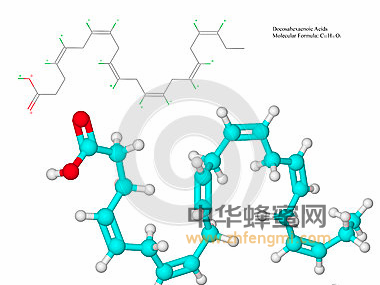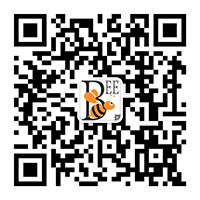蜂蜜文献
蜂蜜质量市场动态及掺假检测方法现状分析
[ 11/11 ]
2016年04月25日 15时11分51秒 来源: 互联网
导读:蜂蜜具有极高的营养价值,深受消费者青睐,销售量也呈逐年上升趋势。然而,近年来我国蜂蜜品质状况不容乐观,蜂蜜农药、兽药残留与掺假现象严重
3、结语
从以上分析可以看出国内蜂蜜造假已向规模化、市场化发展,造假技术呈现出专业化,造假水平越来越高。而且值得注意的是没有一种方法可以完全保证对蜂蜜真伪鉴别结果的准确性,而且目前的检测方法总是跟着掺假技术的脚步出现,这使得蜂蜜掺假现象永远也解决不了。因此,如何找到一种科学有效的蜂蜜掺假检测方法成为了摆在生物科学、分析检测工作者面前的迫切
课题。所以,在开发新的蜂蜜掺假检测技术时,必须充分考虑蜂蜜本身容易掺假的性质,从把握蜂蜜整体特点的角度出发,全面考虑,以不变应万变。
鉴别蜂蜜掺假的根本原理就是基于天然蜂蜜与掺假蜂蜜的差异,那么如何挖掘并放大天然蜂蜜与掺假蜂蜜之间的差异对于指导蜂蜜掺假鉴别具有重要的意义。由于不同品质蜂蜜香味物质呈香规律、特征香气不同,因此,可以利用智能嗅觉等现代分析技术挖掘天然蜂蜜与掺假蜂蜜在呈香规律和特征香气上的差异,以此来鉴别蜂蜜掺假,这或许是一种高效、可行的方法。因此,可以从蜂蜜香味物质呈香规律和特征香气这个切入点入手,寻找能鉴别蜂蜜掺假的技术。我们坚信随着既有效又实用的蜂蜜品质检测技术的开发,蜂蜜的质量会回到正轨。
参考文献:
[1] 卢太白, 陈玲, 张中满. 蜂蜜品质检测与掺假鉴别[J]. 陕西农业科学, 2006(2): 24-25.
[2] 袁玉伟, 张志恒, 叶雪珠, 等. 蜂蜜掺假鉴别技术的研究进展与对策 建议[J]. 食品科学, 2010, 31(9): 318-322.
[3] 马伦姣. 我国蜂蜜出口竞争力的国际比较[J]. 安徽农业科学, 2009, 37(33): 16604-16606.
[4] 何薇莉. 世界蜂业及蜂蜜贸易概况[J]. 中国牧业通讯, 2006(24): 50-52.
[5] 于亚丽. 中国蜂蜜产业出口贸易研究[J]. 中国蜂业, 2012, 63(9): 47-49.
[6] 高芸. 北京蜂蜜产品价格调查报告[J]. 中国蜂业, 2012, 63(10): 46-47.
[7] 刘志城. 我国蜂蜜产量与出口量关系的协整分析[J]. 蜂蜜杂志, 2010(1): 14-16.
[8] 杨寒冰. 2008年全国蜂蜜市场情况回顾及2009年全国蜂蜜市场预 测[J]. 中国蜂业, 2009, 60(4): 18-19.
[9] 陈黎红, 张复兴, 王建梅, 等. 2009—2010年中国蜂产品国内外市场 分析与展望[J]. 世界农业, 2010(9): 47-49.
[10] 杨寒冰. 2010年蜂蜜市场回顾和2011年市场预测及对策[J]. 蜜蜂杂 志, 2011(4): 8-10.
[11] 朱海华, 杨强, 田春华, 等. 蜂产品质量安全与现状分析[J]. 中国蜂 业, 2011, 62(9): 31-32.
[12] 赵东梅, 庄小梅, 徐春涛. 蜂药使用和蜂产品残留研究的现状[J]. 福 建分析测试, 2009, 18(3): 27-29.
[13] 冯强, 何晋浙, 孙培龙. 我国蜂产品质量安全问题分析[J]. 中国蜂业, 2011, 62(9): 28-31.
[14] 曹彦忠. 蜂蜜兽药残留分析技术研究及现状[J]. 中国蜂业, 2011, 62(增刊9): 62-65.
[15] 李崇善, 彪清湖, 张国权. 蜂蜜的质量鉴别及掺假检验[J]. 甘肃科技 纵横, 2002, 32(5): 35-37.
[16] 李水芳, 朱向荣, 单扬. 蜂蜜掺假鉴别技术研究进展[J]. 食品工业科 技, 2009, 30(11): 353-359.
[17] GULER A, BAKAN A, NISBET C, et al. Determination of important biochemical properties of honey to discriminate pure and adulterated honey with sucrose(Saccharum officinarum L.) syrup[J]. Food Chemistry, 2007, 105: 1119-1125.
[18] PADOVANA G J, de JONGB D, RODRIGUESA L P, et al. Detection of adulteration of commercial honey samples by the13C/12C isotopic ratio[J]. Food Chemistry, 2003, 82: 633-636.
[19] ELFLEIN L, RAEZKE K P. Improved detection of honey adulteration by measuring differences between13C/12C stable carbon isotope ratios of protein and sugar compounds with a combination of elemental analyzer-isotope ratio mass spectrometry and liquid chromatography- isotope ratio mass spectrometry (δ-13C-EA/LC-IRMS)[J]. Apidologie, 2008, 39(5): 574-587.
[20] TOSUN M. Detection of adulteration in honey samples added various sugar syrups with 13C/12C isotope ratio analysis method[J]. Food Chemistry, 2013, 138(2/3): 1629-1632.
[21] SIMSEK A, BILSEL M, GOREN A C. 13C/12C pattern of honey from Turkey and determination of adulteration in commercially available honey samples using EA-IRMS[J]. Food Chemistry, 2012, 130: 1115-1121.
[22] SANZ M L, SANZ J, MARTINEZ C I. Gas chromatographic- mass spectrometric method for the qualitative and quantitative determination of disaccharides and trisaccharides in honey[J]. Journal of Chromatography A, 2004, 1059: 143-148.
[23] RUIZ-MATUTE A I, RODRÍGUEZ-SÁNCHEZ S, SANZ M L. Detection of adulterations of honey with high fructose syrups from inulin by GC analysis[J]. Journal of Food Composition and Analysis, 2010, 23: 273-276.
[24] PAWLOWSKA M, ARMSTRONG D W. Evaluation of enantiometric purity of selected amino acids in honey[J]. Chirality, 1994, 6: 270-276.
[25] COTTEJF,CASABIANICAH,GIROUEB,etal.Characterizationof honey amino acid profiles using high-pressure liquid chromatography to control authenticity[J]. Anal Bioanal Chem, 2004, 378: 1342-1350.
[26] 崔小军, 孙晶晶. 关于运用薄层色谱法测定蜂蜜中高果糖淀粉糖浆的研究与探讨[J]. 食品研究与开发, 2004, 25(5): 142-145.
[25] COTTEJF,CASABIANICAH,GIROUEB,etal.Characterizationof honey amino acid profiles using high-pressure liquid chromatography to control authenticity[J]. Anal Bioanal Chem, 2004, 378: 1342-1350.
[26] 崔小军, 孙晶晶. 关于运用薄层色谱法测定蜂蜜中高果糖淀粉糖浆的研究与探讨[J]. 食品研究与开发, 2004, 25(5): 142-145.
[27] REIFFOVÁ K, NEMCOVÁ R. Thin-layer chromatography analysis of fructooligo saccharides in biological samples[J]. Journal of Chromatography A, 2006, 1110: 214-221.
[28] MORALES V, CORZO N, SANZ M L. HPAEC-PAD oligosaccharide analysis to detect adulterations of honey with sugar syrups[J]. Food Chemistry, 2008, 107: 922-928.
[29] MEGHERBI M, HERBRETEAU B, FAURE R, et al. Polysaccharides as a marker for detection of corn sugar syrup addition in honey[J].Journal of Agricultural and Food Chemistry, 2009, 57(6): 2105-2111.
[30] 费晓庆, 吴斌, 沈崇钰, 等. 液相色谱/元素分析-同位素比值质谱联用法鉴定蜂蜜掺假[J]. 色谱, 2011, 29(1): 15-19.
[31] 王介平, 郭军, 陈杨, 等. 高效液相色谱法测定蜂蜜中β-呋喃果糖苷酶酶活[J]. 蜂蜜杂志, 2011(12): 21-23.
[32] HUI D. Enzymatic determination of glycerol in honey[J]. J Agric Food Chem, 1993, 41: 557-559.
[33] 李军生, 何仁, 江权燊, 等. 蜂蜜淀粉酶在鉴别蜂蜜掺假中的应用研究[J]. 食品科学, 2004, 25(10): 59-62.
[34] 叶云, 梁超香, 李军生, 等. 利用同工酶技术检测蜂蜜品质的新方法[J]. 食品科学, 2006, 27(6): 177-178.
[35] CORDELLA C, ANTINELLI J, FAURIERES C, et al. Use of differential scanning calorimetry (DSC) as a new technique for detection of adulteration in honeys. 1. Study of adulteration effect on honey thermal behavior[J]. Journal of Agricultural and Food Chemistry, 2002, 50(1): 203-208.
[36] CORDELLA C, FAUCON J P, CABROL-BASS D, et al. Application of DSC as a toll for honey floral species characterization and adulteration detection[J]. Thermal Analysis and Calorimetry, 2003, 71: 279-290.
[38] ALIFERIS K A, TARANTILIS P A, HARIZANIS P C, et al. Botanical discrimination and classification of honey samples applying gas chromatography/mass spectrometry fingerprinting of headspace volatile compounds[J]. Food Chemistry, 2010, 121: 856-862.
[39] ZHU Xiangrong, LI Shuifang, SHAN Yang, et al. Detection of adulterants such as sweeteners materials in honey using near-infrared spectroscopy and chemometrics[J]. Journal of Food Engineering, 2010, 101: 92-97.
[40] CHEN Lanzhen, XUE Xiaofeng, YE Zhihua, et al. Determination of Chinese honey adulterated with high fructose corn syrup by near infrared spectroscopy[J]. Food Chemistry, 2011, 128: 1110-1114.
[41] 屠振华, 朱大洲, 籍保平, 等. 基于近红外光谱技术的蜂蜜掺假识别 [J]. 农业工程学报, 2011, 27(11): 382-387.
[42] LI Shuifang, SHAN Yang, ZHU Xiangrong, et al. Detection of honey adulteration by high fructose corn syrup and maltose syrup using Raman spectroscopy[J]. Journal of Food Composition and Analysis, 2012, 28: 69-74.
[43] WEI Zhenbo, WANG Jun, LIAO Wenyan. Technique potential for classification of honey by electronic tongue[J]. Journal of Food Engineering, 2009, 94: 260-226.
[44] LAMMERTYN J, VERAVERBEKE E A, IRUDAYARAJ J. zNose(TM) technology for the classification of honey based on rapid aroma profiling[J]. Sensors and Actuators B: Chemical, 2004, 98(1): 54-62.
更多你需要的文章请点击: 蜂蜜
现状
质量
掺假
检验方法
市场
蜂蜜的真伪
蜂蜜鉴别
怎么分辨真蜂蜜
史波林
高海燕
本文链接:https://www.zhfengmi.com/show/32-920.html [复制] (转载请注明出处、保留链接)
本文手机链接:https://m.zhfengmi.com/show-32-920-p11
本文手机链接:https://m.zhfengmi.com/show-32-920-p11




